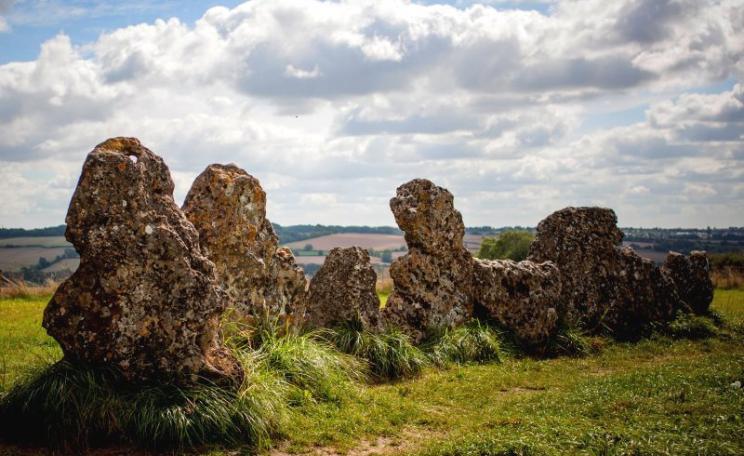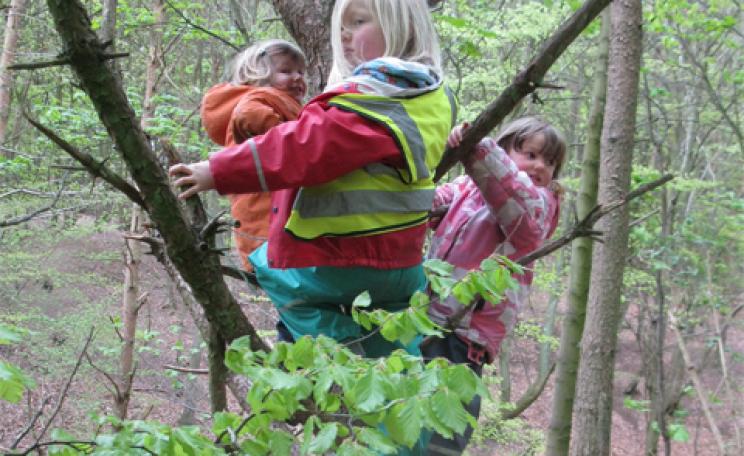A couple of decades ago, surfing was a hobby for a few hardened beach-bums, who come rain, shine or snow, hit British waves year round. Today, with more than 60,000 of us taking to the waves each year, the sport has become one of the most popular ways of getting fit – and back to nature – around. ‘Over time a huge marketing machine has grown that has exploited the surfing aesthetic,’ explains George Stoy of Georges’ Surf School. ‘But in the UK, Ireland and Northern Europe, it’s the advances in wetsuit technology that has probably been the single most significant factor.’ He gives further credit to the general shift in attitude towards creating a balanced lifestyle: ‘in the last 10 years there’s been a trend towards experiencing new things so I guess learning to surf, for many, is part of that.’
 Despite the economic downturn business has boomed over the past five years. ‘Surfing, relatively speaking, is inexpensive,’ he comments. ‘You just need a board and a wet suit, which makes it a more financially attractive ‘family’ activity than skiing for example. However, if you are serious about learning to surf, you need to invest in good teaching. There are schools aplenty but finding a decent one will be well worth the research.’ When in the ocean, you can’t help but be aware of the fragility of the environment, which makes surfing both an excellent way to boost your own knowledge as well as a way of getting your children involved. Surfers are on the frontline; they get to see the true amount of rubbish disregarded and dumped. ‘Pollution is a huge problem simply because the seas have been used as dustbins,’ says George, adding that ‘while water quality seems to have gotten better there’s some waves I stopped surfing because the water in those areas made me ill.’
Despite the economic downturn business has boomed over the past five years. ‘Surfing, relatively speaking, is inexpensive,’ he comments. ‘You just need a board and a wet suit, which makes it a more financially attractive ‘family’ activity than skiing for example. However, if you are serious about learning to surf, you need to invest in good teaching. There are schools aplenty but finding a decent one will be well worth the research.’ When in the ocean, you can’t help but be aware of the fragility of the environment, which makes surfing both an excellent way to boost your own knowledge as well as a way of getting your children involved. Surfers are on the frontline; they get to see the true amount of rubbish disregarded and dumped. ‘Pollution is a huge problem simply because the seas have been used as dustbins,’ says George, adding that ‘while water quality seems to have gotten better there’s some waves I stopped surfing because the water in those areas made me ill.’In the UK, Surfers Against Sewage lobby businesses and government to try and help protect our oceans. Globally the Surfrider Foundation does the same thing. For George the environmental issue is twofold. ‘I try to make surfers aware of the contradiction of what we do. Everyone views surfers as very ecologically sound, which I think most are, but I always encourage clients to only buy the kit they really need, invest in good quality kit that’ll last and to think twice about flying thousands of miles to ride waves.’
Most wetsuit companies in the UK are producing more environmentally friendly suits these days but this has been an issue in the past. George encourages clients to be thrifty and crafty at maintaining kit. ‘Small things like using old wetsuits to repair newer ones that tear, as well as exchanging children’s suits between local surfing families as they grow out of them can make a difference if everyone does it. The reality is that most of our equipment is from the petrochemical industry. There have been good moves made by certain companies like HomeBlown to produce recycled and more environmentally friendly materials to make boards and wetsuits. But with the boom in surfing there is a great deal of poorly made equipment that people new to surfing are buying because it’s cheap and widely available.’
Alongside environmental concerns, George, during years of surfing, has had to think more profoundly about health. ‘Part of my journey has been influenced by getting a bit older and realising the importance of mobility,’ says George, who took up yoga in his 20s. He feels this made a massive difference to his surfing and teaching ability. ‘I’m working on functional movement and mobility and now have a great mobility specialist called Rollo Mahon. He continues to help me form the way I teach certain movements and explain the importance of how we move in our daily lives, in order to encourage my clients to adapt or develop habitual behaviours.’ And along with toning up arm and leg muscles, surfing burns an impressive 115 calories on average per hour.
 Experts in the field of psychology are also declaring the advantages. ‘Activities like surfing are an ideal way to escape the stresses of everyday life,’ says Paul Russell, Senior Lecturer of Sport and Exercise Psychology at the University of Bolton. Paul believes that whether you are an expert or novice, it’s the demands of the ever changing surf which will have you totally immersed. ‘The challenges the waves bring require you to fully engage in the activity. When you’re totally engrossed this helps to provide a complete break from day to day stresses that you might be experiencing.’
Experts in the field of psychology are also declaring the advantages. ‘Activities like surfing are an ideal way to escape the stresses of everyday life,’ says Paul Russell, Senior Lecturer of Sport and Exercise Psychology at the University of Bolton. Paul believes that whether you are an expert or novice, it’s the demands of the ever changing surf which will have you totally immersed. ‘The challenges the waves bring require you to fully engage in the activity. When you’re totally engrossed this helps to provide a complete break from day to day stresses that you might be experiencing.’ ‘The fact that surfing allows you to perform in a challenging environment will also give you an adrenalin rush which will help invigorate both your body and mind. Furthermore the sense of accomplishment, and confidence, that both the beginner and expert surfer experience out on the waves helps develop a "can do" attitude that assists in overcoming stress or anxiety.’ George, with the enviable task of teaching clients to ride the Cornish waves all year round, isn’t blasé about his lot. ‘My work is boundlessly rewarding. Key for me is teaching people to achieve sustainable healthy lifestyles, of which surfing in most cases is usually only a small part.’ It’s certainly little wonder that surfing’s popularity is ever-escalating. The shattered and the stressed are enticed by the uncomplicated pleasure of being pushed around by the elements, while for the rest, the combination of getting fit and getting back to nature at the same time has proven irresistible.
 Five brilliant British surfing spots
Five brilliant British surfing spotsPease Bay Borders, Scotland
Surfing in Scotland has grown enormously in recent years. Sam Christopherson, Surf Instructor at C2C Surfing explains why. ‘The South East coast of Scotland is a fantastic coastline to start surfing due to its consistent small surf and perfect shallow beaches; ideal for beginners.’
Sennen Cove, Cornwall
Sennen Cove is an exquisite Cornish Bay with waves suitable for both newbies and professionals. ‘Sennen boasts one of the UK's cleanest beaches with the most consistent swell in the UK. The waves vary in size from one end of the beach to the other allowing us, as a surf school, to pick the appropriate size surf. When its flat here it’s generally flat everywhere,’ says David Muir of Sennen Surfing Centre.
Saunton Sands, Devon
Ed Temperley, editor at www.magicseaweed.com explains; ‘Saunton Sands is a huge space which means the beginners can escape the crowds. The gentle wave works throughout the tide and there’s hire right on the beach so you don't have to faff around with cars and straps. Plus there's a nice bar to chill out in afterwards.’
Porth Neigwl, Wales
Porth Neigwl is North Wales’ best known surfing spot. Boasting a bay that’s four miles long there’s waves to be seen the whole length when the swell is good. ‘On the end of the Llyn Peninsular, Porth Neigwl is stuck out in to the middle of the Irish Sea, well placed to collect any swell that ventures past southern Ireland,’ says Jon at West Coast Surf Shop.
Bournemouth, Dorset
Bournemouth boasts Europe’s first artificial reef and is sure to see curious enthusiasts heading over to give it a try. Emma Hedges from the Bournemouth Surf School says; ‘Bournemouth is a great place for beginners as we have loads of space to spread out, a great sandy beach and the waves are not too big or too powerful at certain points.’
Phoebe Doyle blogs at www.tremendouslytwo.com
| READ MORE... | |
 |
GREEN LIVING Ten of the best...ways to boost your fitness outside From Nordic walking to tai chi, George Blacksell rounds up ten great ways to take your workout into the great outdoors |
 |
GREEN LIVING Ten of the best…British wild swimming spots Thought you couldn’t swim in the Thames? As Rosie Spinks discovered, London’s waterway is one of the UK’s top locations for a natural dip |
 |
GREEN LIVING The Art of Mindful Walking: how to walk in the city From towpaths to parks, in this exclusive extract from The Art of Mindful Walking, Londoner Adam Ford says there's just as much pleasure to be had from city strolling as from country hiking |
 |
GREEN LIVING Eco-sportswear: what to wear and how to buy it From shoes to shirts and everything in between, Robert Phillips takes a closer look at the eco sports gear on offer |
 |
GREEN LIVING Above and Below: the eco-friendly take on Converse Can you really make cool shoes from old tube seats? If eco-shoe maker Above and Below is anything to go by, says Sella Oneko, yes you can |








